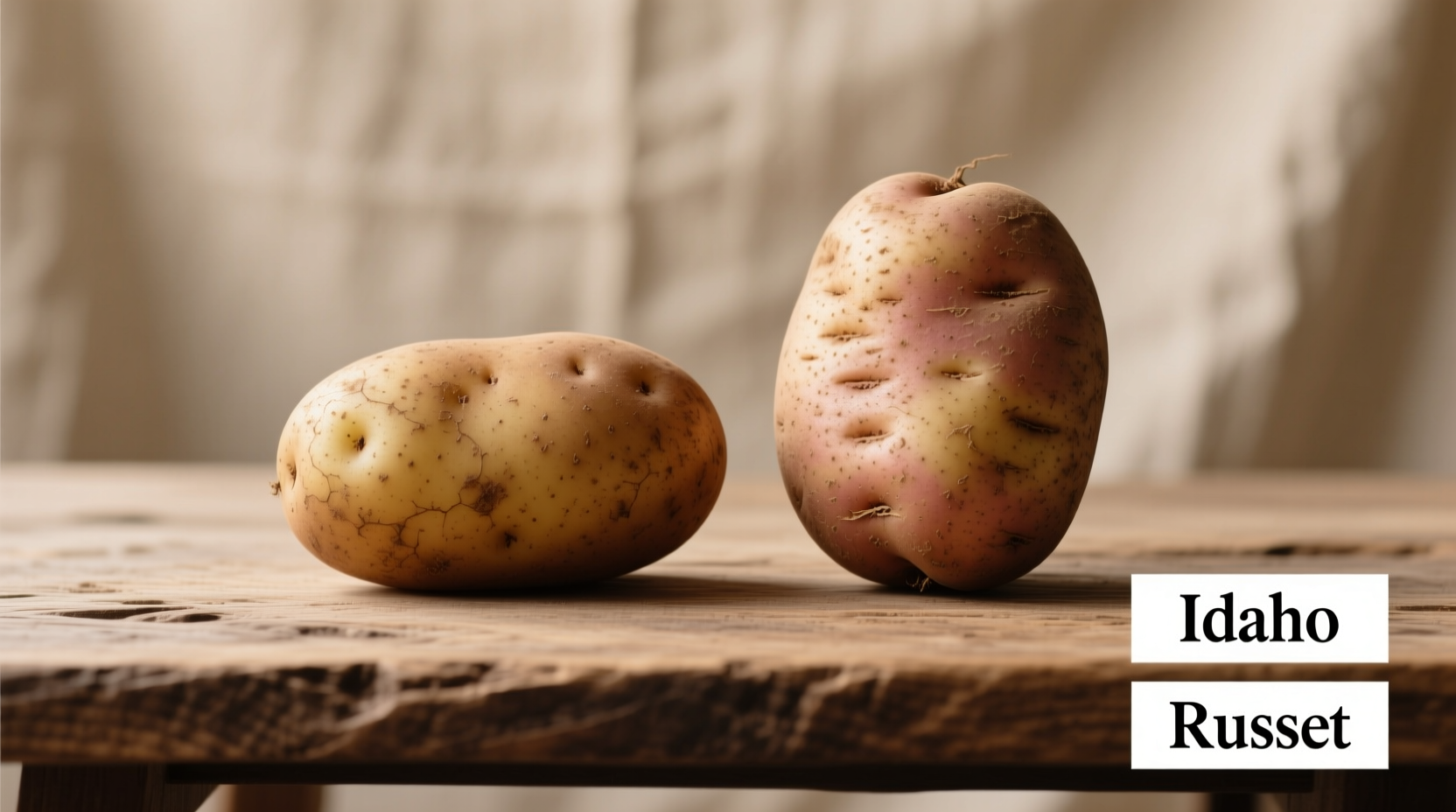Idaho potatoes are a specific type of Russet potato grown under strict conditions in Idaho's ideal volcanic soil. All Idaho potatoes are Russets, but not all Russet potatoes qualify as Idaho potatoes due to regional growing requirements and quality standards.
Confused about Idaho versus Russet potatoes? You're not alone. Many home cooks and even professional chefs wonder whether these terms refer to different potato varieties or if they're interchangeable. Understanding this distinction matters for your cooking results—whether you're making fluffy mashed potatoes, crispy fries, or the perfect baked potato. Let's clarify this common culinary confusion with facts you can trust.
Understanding the Potato Terminology
When you see "Idaho potato" at the grocery store, you're looking at a Russet Burbank variety grown specifically in Idaho under regulated conditions. The Idaho Potato Commission maintains strict standards: only Russet potatoes grown in Idaho's volcanic soil with its unique climate and irrigation can legally bear the "Grown in Idaho" seal.
Russet refers to a potato variety characterized by its rough brown skin and white flesh. Idaho refers to a growing region with specific quality standards. Think of it like Champagne versus sparkling wine—only certain products from specific regions can use the protected name.
| Characteristic | Idaho Potato | Russet Potato (General) |
|---|---|---|
| Growing Region | Exclusively Idaho | Various regions nationwide |
| Variety | Russet Burbank (primarily) | Russet Burbank, Norkotah, others |
| Soil Requirements | Volcanic ash-rich soil | No specific requirements |
| Starch Content | High (18-22%) | Moderate to high (varies by region) |
| Moisture Content | Optimal balance | Can vary significantly |
| Regulation | Idaho Potato Commission standards | No standardized regulation |
Why Idaho's Environment Creates Superior Russets
Idaho's unique growing conditions create Russet potatoes with consistently superior cooking properties. The state's volcanic soil, clean mountain water, and significant day-night temperature variations produce potatoes with:
- Higher dry matter content (meaning more potato, less water)
- Optimal starch-to-moisture ratio for fluffy baked potatoes
- Lower sugar content that prevents excessive browning when fried
- Thicker skin that holds together better during cooking
According to University of Idaho agricultural research, Idaho-grown Russets typically contain 18-22% starch compared to 15-19% in Russets grown in other regions. This seemingly small difference significantly impacts cooking results—higher starch content means fluffier baked potatoes and crispier fries.

When Substitution Matters: Cooking Applications
Not all potato applications require strict adherence to Idaho Russets, but certain dishes benefit significantly from their specific properties:
Best Uses for Idaho Russets
- Baked potatoes: Their high starch content creates that signature fluffy interior
- French fries: Lower sugar content prevents excessive browning during frying
- Mashed potatoes: Absorb butter and cream better for ultra-fluffy results
When Regular Russets Work Fine
- Stews and soups: Texture differences become negligible in liquid-based dishes
- Potato salad: Waxy potatoes often work better than either Russet type
- Roasted potatoes: Other high-starch varieties like Yukon Gold can substitute
How to Identify Authentic Idaho Potatoes
Look for the official "Grown in Idaho" seal with the registered certification mark. This oval seal guarantees the potatoes meet the Idaho Potato Commission's strict standards for:
- Origin (must be grown in Idaho)
- Variety (primarily Russet Burbank)
- Quality (minimum size, no defects)
- Packaging standards
Without this seal, potatoes labeled "Idaho" might simply be Russets grown elsewhere. The commission actively pursues legal action against mislabeled products to protect consumers.
Common Misconceptions Clarified
Myth: Idaho potatoes are a different variety than Russets.
Fact: Idaho potatoes are Russets—specifically Russet Burbank grown under Idaho's conditions.
Myth: All Russets from Idaho are automatically "Idaho potatoes."
Fact: Only potatoes meeting the commission's standards can use the protected name.
Myth: Idaho potatoes are significantly more expensive.
Fact: Price differences are minimal, but the consistent quality often makes them worth the slight premium for critical applications.
Storage and Selection Tips
Whether you've purchased Idaho-certified Russets or other Russets, proper storage maximizes quality:
- Store in a cool, dark place (45-50°F / 7-10°C is ideal)
- Avoid refrigeration which converts starch to sugar
- Keep away from onions which emit gases that accelerate sprouting
- Don't wash before storage—moisture promotes decay
- Use within 2-3 months for best quality
When selecting potatoes, look for firmness, smooth skin without green spots, and minimal eyes or blemishes. Idaho-certified potatoes typically have a more uniform shape and size compared to generic Russets.
Practical Takeaways for Home Cooks
For most everyday cooking, generic Russets work fine. But when you're making dishes where texture is critical—like the perfect baked potato or restaurant-quality French fries—Idaho-certified Russets deliver more consistent results due to their regulated growing conditions and quality standards.
Understanding the idaho vs russet potato distinction helps you make informed choices at the grocery store and achieve better results in the kitchen. Remember: Idaho potatoes are a premium subset of Russet potatoes, not a different variety entirely.











 浙公网安备
33010002000092号
浙公网安备
33010002000092号 浙B2-20120091-4
浙B2-20120091-4